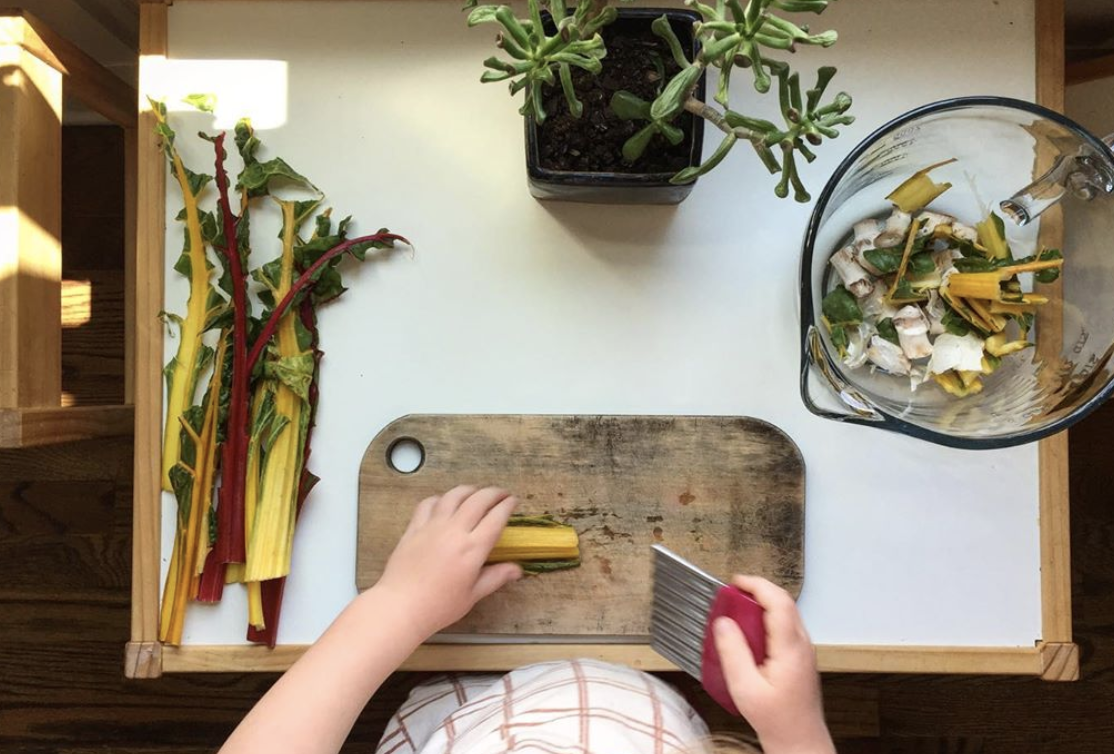As a nutritionist and a mother, you might assume that my child has a perfect relationship with food? You'd be wrong, my child, like so many others in the UK regularly refuses to eat his fruit and vegetables. When meal times can be such a challenge, it's no wonder that only 1 in 10 children are getting their 5-a-day in the UK.
My son has gone through the typical childhood phases, from food neophobia (fear of eating new foods), to a reluctance of eating anything green or avoiding food that’s not separated on the plate. It has often been stressful and even with all my professional experience, as a family, we definitely could have approached things differently.
So if you have a fussy toddler or teenager, my first piece of advice is to simply be a role model. Children copy our behaviour, the good and the bad. It might not seem like it now, but they will observe and copy the way we eat and behave around food.
START SMALL
If your child refuses to eat a certain food, start by placing a very small amount of it on their plate. Everything else on the plate, should be familiar foods that they like. Part of the challenge here is to get them used to having it on their plate. Keep reassuring them that they don’t have to eat it, but leave it in front of them.
BE PATIENT
Keep offering your children the food they have an aversion to. It can take up to seventeen times for a child to be exposed to the particular food before they actually try it, so persistence and patience is key.

DON’T REWARD WITH FOOD
How often have we said, ‘if you eat all your veg, you can have ice-cream.’ Using these typically sweet foods, may result in overconsumption of sugar, while also promoting the idea of ‘good or bad foods’. Using different rewards such as ‘when you finish, we can play lego’ will encourage better food acceptance.

EAT TOGETHER
Ideally you want to have all three meals together as family, but this might be very tricky to achieve with work commitments, school and our ever changing schedules. Aim to have one meal per day together as a family and make it the time you all come together, share stories and connect.
DON’T OFFER ALTERNATIVE MEALS
Children are so persuasive, aren’t they? If they refuse a meal, don’t sweat it. Explain that this is the only meal currently available and when they get hungry enough to try it (or after a few attempts) they become less resistant to these meals.

GET THEM INVOLVED
Include them in the cooking process. Have them chop, peel, stir and turn cooking into a fun, creative activity. As a bonus, it will also get those digestive juices going and they might even start looking forward to their meal. Tell them how proud you are of their excellent cooking skills.
CUT BACK ON SNACKING
If between each main meal children are having one or two snacks, they’re likely to not have a huge appetite when it comes to mealtime. Unless your child has a very healthy appetite, I advise cutting back on snacks.
MAKE IT COLOURFUL
On top of offering the rainbow, make it informative. Each colour has a superpower:
Red foods give you a strong heart (apples)
Orange foods help you see in the dark (carrots)
Yellow foods help to heal cuts (mango)
Green foods help fight of sick bugs (broccoli)
Blue and purple foods give you a strong, clever brain (blueberries)
White foods give you energy (cabbage)
Most importantly, remember, you’re not alone. Almost every parent experiences difficulties at some point. Be patient, make it fun, get them involved and remember to lead by example.
Jo Sharp
Nutritional Therapist BANT, CNHC
@JOSHARPNUTRITION_

Original article on Gozo in the House
DISCLAIMER This program is not designed to provide medical services nor is a health and nutrition consultation being provided as a substitute for a consultation, diagnosis, and treatment by a licensed primary health care professional, such as a Medical Doctor. Products or treatments recommended in this program are not intended to diagnose, prescribe, or treat symptom, defect, injury, or disease. The information contained herein is intended to inform, not provide individual medical advice or care.
Tags: Child Nutrition | Author: Jo Sharp, Nutritionist






